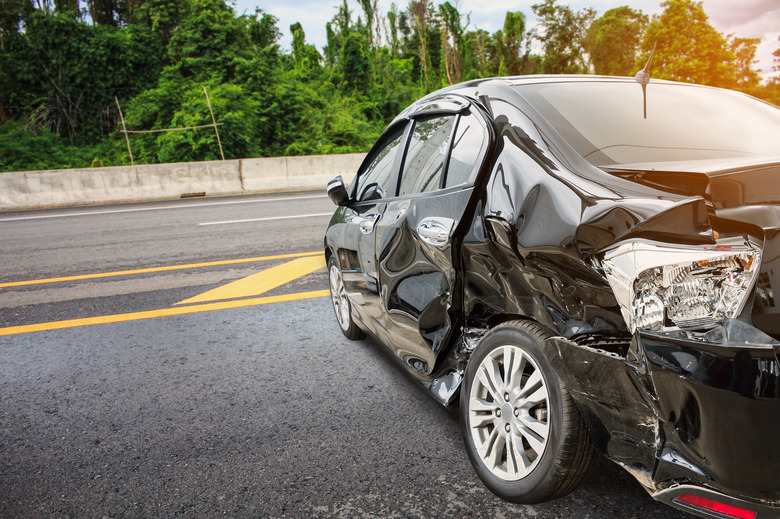How To Calculate Crash Forces
According to Newton's Second Law of Motion, the force, in Newtons, that an object exerts on another object is equal to the mass of the object times its acceleration. How can this be applied to calculating the forces involved in a crash? Keep in mind that acceleration is an object's change in speed over time. Objects involved in crashes usually decelerate–the numerically negative form of acceleration–to a stop. Calculating the amount of force involved in a crash is as simple as multiplying the mass of the crashing object by its deceleration.
Step 1
Determine how much mass the crashed object contains. For instance, consider a 2,000-pound car. On Earth, there are 2.2 pounds for every kilogram (kg) of mass, so:
\(\text{mass of car} = 2,000\text{ pounds}\frac{1\text{ kg}}{2.2\text{ pounds}}=909.1\text{ kg}\)
Step 2
Determine the acceleration, or deceleration, involved in the crash. Imagine that the car was traveling as 27 meters per second (m/s)–roughly 60 miles per hour–when it hit a wall, coming to a complete stop in 0.05 seconds–5 hundredths of a second. To calculate the acceleration, simply divide the change in speed by the time it took to change.
\(a=\frac{0\text{ m/s}-27\text{ m/s}}{0.05\text{ s}}=-540\text{ m/s}^2\)
Note: the negative sign on the acceleration indicates that it was deceleration that occurred, and is not important when calculating the net force involved.
Step 3
Use Newton's Second Law to calculate the net force involved in the crash.
\(F=ma=(909.1\text{ kg})(540\text{ m/s}^2)=490.914\text{ N}\)
The car exerts a force of 490,914 N on the wall, which is roughly equivalent to 550 times the car's weight.
References
Cite This Article
MLA
Banas, Timothy. "How To Calculate Crash Forces" sciencing.com, https://www.sciencing.com/calculate-crash-forces-6038611/. 5 December 2020.
APA
Banas, Timothy. (2020, December 5). How To Calculate Crash Forces. sciencing.com. Retrieved from https://www.sciencing.com/calculate-crash-forces-6038611/
Chicago
Banas, Timothy. How To Calculate Crash Forces last modified March 24, 2022. https://www.sciencing.com/calculate-crash-forces-6038611/
